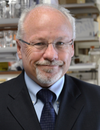Co-Located Conference AgendasLab-on-a-Chip & Microfluidics Europe 2019 | Organ-on-a-Chip & Tissue-on-a-Chip Europe 2019 | Point-of-Care, Biosensors & Mobile Diagnostics Europe 2019 | 

Tuesday, 18 June 201907:45 | Conference Registration, Materials Pick-Up, Morning Coffee and Tea in the Exhibit Hall | 08:45 |  | Conference Chair Chairperson's Welcome and Introduction to the Conference
Nancy Allbritton, Kenan Professor of Chemistry and Biomedical Engineering and Chair of the Joint Department of Biomedical Engineering, University of North Carolina and North Carolina State University, United States of America
|
| |
Session Title: Opening Plenary Session |
| | 09:00 |  | Keynote Presentation Optofluidic Labs-on-Chip For Single Molecule Analysis
Holger Schmidt, Narinder Kapany Professor of Electrical Engineering, University of California-Santa Cruz, United States of America
Lab-on-chip devices have long held the promise of providing a convenient
and rapid way to analyze small amounts of biological samples. However,
when pushed to the ultimate limit of single molecule sensitivity, the
detection mechanism is often based on off-chip elements. I will discuss a
chip-scale platform that offers both integrated optical and electrical
single molecule analysis. Optical integration is achieved by using
liquid-core waveguides interfaced with traditional photonic elements to
implement advanced functionalities. Examples include multiplex detection
of single viruses, simultaneous detection of proteins and nucleic acid
biomarkers, and front-to-back sample handling and single DNA detection
on a single chip. Electrical single molecule analysis is achieved by
integration of solid-state nanopores. Novel nanopore detection
capabilities such as feedback-controlled delivery of single molecules to
a fluidic channel are demonstrated. The combination of both optical and
electrical detection modalities results in a novel, high throughput
platform for single molecule analysis. |
| 09:30 |  | Keynote Presentation Organs-on-Chips: Analytical Tools and Objects for Analysis
Elisabeth Verpoorte, Chair of Analytical Chemistry and Pharmaceutical Analysis, University of Groningen, Netherlands
Organs-on-chips (OoC) can be viewed as biological processing units, meant to replicate on a smaller scale the cell architecture and functioning of the organs they represent. OoC may be used to probe and thus better understand the mechanisms by which organs function. Mostly, though, they will be used as in vitro processing tools, to yield insight as to the fate of compounds like drugs or foodstuffs in vivo. Either way, merging analytical detection technologies with microfluidics and cell culture is key to the development of these systems for advanced in vitro analysis. Several examples of analytical approaches for monitoring liver slice behavior stemming from our labs will be presented in this presentation. |
| 10:00 |  | Keynote Presentation New Opportunities in Acoustofluidic Processing of Liquid Biopsies
Thomas Laurell, Professor, Lund University, Sweden
Blood sampling and molecular analysis of plasma is the most common clinical diagnostic modality in modern health care. With more advanced means to downstream processing, sub components of blood can be isolated, improving the diagnostic outcome. Detection and analysis of rare events is specifically an area where high performance isolation of sub components of blood is critical and where lab-on-a-chip technology has paved the way for several new approaches. Acoustic forces in combination with microfluidics has open new avenues for high performance blood cell separation, enabling isolation of cancer cells from blood, leukocyte sub populations and more recently also enrichment and purification of extracellular vesicles. Our initial efforts in isolating circulating tumor cells using acoustophoresis in clinical scale prostate cancer patients samples will be reported.
Although conventional acoustophoresis is limited in is ability to manipulate particles smaller than 1 um secondary acoustic effects can alleviate this short coming. Scattered ultrasound between larger particles, that can be retained in a local acoustic field in a microchannel, can be utilized to enrich submicron vesicles on the larger “trapping particles”. Based on this we have developed a microfluidic platform that enables isolation of extra cellular vesicles (EVs) from biofluids such a urine, blood plasma and cell culture medium without the need for ultracentrifugation. Further, benefits of isolating EVs by means of acoustic trapping is rapid processing that provides relatively high recoveries (up to 60-80%), yet handling small sample volumes (20-50 uL blood plasma), giving access to molecular profiling of extra cellular vesicles in biobanks. Our studies have demonstrated protein and miRNA profiling of blood plasma EVs from myocardial infarction patients as well as in urine samples from healthy donors. More recently we have been able to detect EV protein biomarker profiles in heart transplant patients with acute rejection which could not be detected in blood plasma. |
| 10:30 | Morning Coffee, Tea and Networking in the Exhibit Hall | 11:15 |  | Keynote Presentation Nanosensor Chips for the Single-Molecule Sequencing of DNA and RNA
Steve Soper, Foundation Distinguished Professor, Director, Center of BioModular Multi-Scale System for Precision Medicine, The University of Kansas, United States of America
We are generating a single-molecule DNA/RNA sequencing platform that can
acquire sequencing information with high accuracy (>99%) at
unprecedented throughputs (106 nt/s). The technology employs a fluidic
chip populated with nanosensors that read the identity of individual
mononucleotides from their characteristic flight-time through a
2-dimensional (2D) nanochannel (~50 nm in width and depth; >10 µm in
length) and their current transient amplitudes. The nanosensors are
fabricated in a thermoplastic via nanoimprint lithography (NIL). The
mononucleotides are generated from an intact DNA fragment using a highly
processive exonuclease, which is covalently anchored to a plastic
support (500 nm in diameter) contained within a bioreactor that
sequentially feeds mononucleotides into a 2D nanochannel. The identity
of the mononucleotides is deduced from a molecular-dependent flight-time
through the 2D nanochannel that is related to the electrophoretic
mobility of that molecule. The flight time is read in a label-less
fashion by measuring current transients (i.e., resistive pulse sensing)
induced by a single mononucleotide when it travels through a
constriction possessing molecular dimensions (<10 nm in diameter) and
poised at the input/output ends of the flight tube. In this
presentation, our efforts in building these nanosensors using NIL in
thermoplastics will be discussed. We will also talk about the detection
of single molecules using NIL-produced nanopores. Also, surface
modifications of plastics for the immobilization of biologics, such as
exonucleases, will be discussed and their enzymatic performance when
surface immobilized. Finally, information on the manipulation of single
DNA molecules using nanofluidic circuits that uses nano-scale features
to shape electric fields will be presented. |
| 11:45 |  | Keynote Presentation Intestine on a Chip for Basic Biology and Patient-Specific Medicine
Nancy Allbritton, Kenan Professor of Chemistry and Biomedical Engineering and Chair of the Joint Department of Biomedical Engineering, University of North Carolina and North Carolina State University, United States of America
The ability to monitor and control the environment at the cellular and tissue level is one of the most promising applications for microengineered systems. Advances over the past decade in our ability to isolate and culture stem cells when combined with microengineering make it possible to conceive of physiologically functional systems that reconstitute whole organ physiology. These “organ-on-a-chip” platforms enable the establishment of the tissue interfaces necessary for organ function while providing exquisite control of experimental variables and sharing the richness of the intact organism. My group is at the forefront of marrying these advances in stem-cell culture with microengineering to create in vitro tissue mimics with a focus on the intestine. We constructed in vitro epithelium for human and mouse, small and large intestine that bear a stunning physical resemblance to the in vivo intestinal epithelium epithelia displaying arrays of polarized crypts. Most importantly this system recapitulates much of the physiology of the native intestinal epithelium. The system is constructed by developing a self-renewing monolayer of primary cells which is then shaped using microfabrication techniques. The platform enables application of the diverse chemical gradients (growth factors, morphogens, bacterial metabolites, food substances, and gases) thought to exist along the crypt-villus axis. Application of gradients of microbiota-derived fermentation products across this tissue provided a direct demonstration that these products drive alterations in the size of the crypts’ proliferative and differentiated compartments as predicted to occur in vivo. The system also enables co-culture of anaerobic intestinal bacteria above a physiologic mucus layer. Using this platform, small intestinal biopsies from humans can be used to populate the constructs with cells producing patient-specific tissues for personalized medicine. |
| 12:15 |  | Keynote Presentation Emerging Technologies For Biohybrid Machines
Shoji Takeuchi, Professor, Center For International Research on Integrative Biomedical Systems (CIBiS), Institute of Industrial Science, The University of Tokyo, Japan
Engineers have created various kinds of machines such as smart phones, humanoid robots, self-driving cars, etc. However, there are still big hurdles to build a system that demonstrates attractive functions appearing in biological systems, such as single molecule recognition, highly efficient biomolecular production, biocompatibility and self-healing/self-reproducing ability etc…
To achieve this function, we have studied biohybrid machines that harnesses the living system within artificial systems. In this symposium, I would like to talk about a couple of our recent results regarding biohybrid sensors and actuators. |
| 12:45 |  | Keynote Presentation Towards Wearable Microfluidic Devices For Well-Being and Personalized Healthcare
Martyn Boutelle, Professor of Biomedical Sensors Engineering, Imperial College London, United Kingdom
Advances in microfluidic technologies, electronics and sensors, combined with the phenomenal growth in mobile computing power provided by current tablets and mobiles allow us to imaging finally taking the ‘lab-on-a-chip’ away from its laboratory full of control equipment. Through miniaturization and carefully engineered smart designs we can embed computer control and analytical best practice into portable even wearable devices that are able to compensate for shortcomings such as falling performance. These hybrid microfluidic systems appear to their target users as simple stable systems that tell them what they want to know. My group specializes in designing and building such microfluidic systems to meet the needs of acute critical care medicine. Key molecular markers are measured using both optical and electrochemical sensors and biosensors. We then work with clinical care teams to show proof of concept of the real-time continuous chemical information that microfluidic systems can produce. Our ultimate goal is that such systems can be used to monitor patients and guide therapy in a patient-specific, personalized way. |
| 13:15 | Networking Lunch in the Exhibit Hall and Poster Viewing | 14:00 | Luncheon Presentation on Policy: Advancing Nonclinical Regulation, Policy, Science, Education and Training in the United States
Kristie Sullivan, Vice President for Research Policy, Physicians Committee for Responsible Medicine, United States of America
Recent developments, such as the U.S. Food and Drug Administration’s Predictive Toxicology Roadmap, represent a fundamental shift in how drugs will be developed and regulated. U.S. regulators now state the need to move away from animal testing towards new approach methodologies that can be expected to be more predictive for humans, and have begun mapping their plans for doing so. The Nonclinical Innovation and Patient Safety Initiative (NIPSI) collaboration is addressing the factors that impede the uptake of modern, predictive approaches, such as organ chips. Projects include changing U.S. FDA and International Council on the Harmonisation of Technical Requirements for Pharmaceuticals for Human Use (ICH) regulations from requiring “animal” data to “nonclinical,” which encompasses in vivo, in vitro and in silico approaches; lobbying the U.S. Congress to increase funding allocated for human-based approaches; and working to establish a qualification pathway that covers in vitro platforms and computer models. The presentation will include results from a recent review of new drug applications (NDA) that found no inclusion of organ chips in U.S. FDA submissions for approved drugs. | |
Session Title: Organs-on-Chips 2019, Emerging Themes |
| | 14:15 |  | Keynote Presentation Human-on-a-Chip Systems For Use in Efficacy and Toxicological Investigations For Applications in Neurological Diseases
James Hickman, Professor, Nanoscience Technology, Chemistry, Biomolecular Science and Electrical Engineering, University of Central Florida; Chief Scientist, Hesperos, United States of America
One of the primary limitations in drug discovery and toxicology research is the lack of good model systems between the single cell level and animal or human systems. This is especially true for neurodegenerative diseases such as ALS and Alzheimer’s as well as spinal cord injury. In addition, with the banning of animals for toxicology testing in many industries body-on-a-chip systems to replace animals with human mimics is essential for product development and safety testing. Our research focus is on the establishment of functional in vitro systems to address this deficit where we seek to create organs and subsystems to model motor control, muscle function, myelination and cognitive function, as well as cardiac and liver subsystems. The idea is to integrate microsystems fabrication technology and surface modifications with protein and cellular components, for initiating and maintaining self-assembly and growth into biologically, mechanically and electronically interactive functional multi-component systems. Our advances in culturing adult rat, mouse and human mammalian spinal cord, hippocampal neurons, muscle and cardiac cells in a defined serum-free medium, suggest outstanding potential for answering questions related to maturation, aging, neurodegeneration and injury. A specific embodiment of this technology is the creation of a functional human NMJ system to understand ALS. We have investigated four mutations found in ALS patients; SOD1, FUS, TDP43 and C9ORF72. The models have demonstrated variations of the disease phenotype compared to WT for NMJ stability and functional dynamics. Results of these studies will be presented as well as preliminary results for reversal of the deficits. Examples will be given of some of the more advanced human-on-a-chip systems being developed for CNS and PNS disease applications as well as the results of six workshops held at NIH to explore what is needed for validation and qualification of these systems.
|
| 14:45 | Three-Dimensional Blood Vessels-on-Chips: Perfusion With Blood and Integration Into Organs-on-Chips
Andries D. van der Meer, Associate Professor, Scientific lead, Organ-on-Chip Center Twente, University of Twente, Netherlands
Small blood vessel dysfunction associated with chronic inflammation and oxidative stress is increasingly recognized as a key aspect of a wide array of diseases, such as heart failure with preserved ejection fraction, diabetic retinopathy and cerebral small vessel disease. Advanced in vitro models of small diameter blood vessels will become essential in understanding the pathophysiology of these diseases as well as in finding new strategies for prevention and treatment. Here, three-dimensional microfluidic models of small-diameter blood vessels or ‘blood vessels-on-chips’ are presented, which integrate (1) human vascular tissue, including human induced pluripotent stem cell-derived cells, (2) controlled flow patterns, and (3) human whole blood. Examples are given of how these blood vessels-on-chips can be used to study relevant parameters of vascular function and dysfunction, like cytokine release, platelet adhesion and permeability. Moreover, it is shown how blood vessels-on-chips can be integrated in more complex organs-on-chips like heart-on-chip and retina-on-chip models to study vascular dysfunction in more comprehensive disease models. | 15:15 |  | Keynote Presentation Advanced Organ-on-a-Chip Systems: Integrated Microphysiological Platforms Recapitulating Complex Human Tissue
Peter Loskill, Assistant Professor for Experimental Regenerative Medicine; Attract Group Leader Organ-on-a-Chip, Fraunhofer Institute for Interfacial Engineering and Biotechnology IGB, Eberhard Karls University Tübingen, Germany
Drug discovery and development to date has relied on animal models, which are useful, but fail to resemble human physiology. The discovery of human induced pluripotent stem cells (hiPSC) has led to the emergence of a new paradigm of drug screening using human patient- and disease-specific organ/tissue-models. One promising approach to generate these models is by combining the hiPSC technology with microfluidic devices tailored to create microphysiological environments and recapitulate 3D tissue structure and function. Such organ-on-a-chip systems (OoCs) or microphysiological systems combine human genetic background, in vivo-like tissue structure, physiological functionality, and “vasculature-like” perfusion.
Using microfabrication techniques, we have developed a variety of OoCs that incorporate complex human 3D tissues and keep them viable and functional over multiple weeks, including “Retina-on-a-chip”, “Choroid-on-a-chip”, “Heart-on-a-chip”, “Pancreas-on-a-chip and a “White adipose tissue(WAT)-on-a-chip”. The OoCs generally consist of three functional components: organ-specific tissue chambers mimicking in vivo structure and microenvironment of the respective tissues; “vasculature-like” media channels enabling a precise and computationally predictable delivery of soluble compounds (nutrients, drugs, hormones); “endothelial-like” barriers protecting the tissues from shear forces while allowing diffusive transport. The small scale and accessibility for in situ analysis makes our OoCs amenable for both massive parallelization and integration into a high-content-screening approach.
The adoption of OoCs in industrial and non-specialized laboratories requires enabling technologies that are user-friendly and compatible with automated workflows. We have developed technologies for automated 3D tissue generation as well as for the flexible plug&play connection of individual OoCs into multi-organ-chips. These technologies paired with the versatility of our OoCs pave the way for applications in drug development, personalized medicine, toxicity screening, and mechanistic research.
|
| 15:45 | Afternoon Coffee and Tea Break and Networking in the Exhibit Hall | 16:15 | Nanotechnology Enabling Advanced Organ-on-Chips
Dries Braeken, R&D Manager, Life Science Technologies, IMEC, Belgium
Drug toxicity is a major challenge for the pharmaceutical industry. Today’s toxicity models are inefficient as they are mainly based on simple in vitro models, or poorly translating animal models. Organs-on-chip promise to better mimic the human physiology, in order to improve toxicity screening in the drug development process. Beyond toxicity screening, OoC devices can also model disease and help develop novel targets. In this presentation, I will highlight how nanotechnology can play a role in these new model systems, and demonstrate heart-on-chip and brain-on-chip devices in development. | 16:45 | Microfabrication Technologies For Engineering a Joint on Chip
Marcel Karperien, Professor, University of Twente, Netherlands
Osteoarthritis is a degenerative joint disease affecting more than 100.000.000 patients world-wide. Despite tremendous efforts in the past, the etiology of the disease is still poorly understood and cannot be cured. While initially considered as a disease of cartilage it is now clear that the disease involves all tissues in the joint. Furthermore a disease trigger in each of these tissues can initiate the onset of disease. Despite the different origin they culminate over time in a similar disease presentation. It has also become clear that currently used animal models poorly reflect the complexity of human disease nor do allow the detailed study of the complex interactions between the different joint tissues at various stages of disease. To address these shortcomings my group has started the development of a joint-on-chip. The joint-on-chip has a modular chip design. We are engineering chips for each individual tissue, i.e. cartilage, subchondral bone, synovium, ligament and/or meniscus which together form the joint. The individual chips are connected to each other through blood vessel mimicking microfluidic channels as well as with a chip mimicking the intra-articular space. This latter chip will contain features allowing non-invasive imaging / sensing of inter tissue communication. Since movement is a critical and an essential feature in every joint, the individual chips can all be independently actuated mimicking both compression and shear stress. Prototype chips of the synovium and the cartilage including actuation have become available. Additionally we developed various strategies for introducing cell laden membranes composed of natural polymers and/or tissue constructs in the chip. Finally, we have developed sensors that can assess local matrix metalloproteinase activity, a key factor driving joint degeneration on chip. In my presentation I will discuss various engineering aspects of our microfabrication technology platforms needed for recreating a representative and functional human joint. | 17:15 | Immunocompetent Gut-on-a-Chip as a Model of Tissue Inflammation
Michael Bscheider, Group Leader, Roche Pharma Research and Early Development, Switzerland
Owing to its complex and multifactorial nature, inflammatory bowel disease (IBD) remains poorly understood, which, in turn, renders the development of effective IBD therapies a major challenge. The poor translatability of IBD therapeutics from mice to humans may be attributed in large part to the fundamental immunological differences between the two species. Advanced three-dimensional (3D) culture models and microphysiological systems are emerging as superior alternatives to animals in capturing human-specific physiology and disease. We have created an immune-competent gut-on-a-chip model comprising a tight intestinal epithelial barrier, extracellular matrix, resident and circulating immune cells. Beyond a mere co-culture, the system recapitulates the crucial multidirectional interactions between matrix, parenchymal and immune cells that generate an inflammatory milieu and ultimately result in epithelial damage in the context of IBD. The physiological completeness of the model may help afford fundamental insight into the mechanisms that drive chronic inflammation in the gut and other organs, ultimately supporting drug discovery. | 17:45 | Functional Coupling of Human Pancreatic Islet Microtissues and Liver Spheroids in a Novel Micro-Physiological Multi-Organ System for Studies of Human Metabolic Diseases in Drug Discovery
Carina Ämmälä, Team leader, Cardiovascular, Renal and Metabolism, AstraZeneca, Sweden
Multi organ-on-a-chip technologies, emulating human physiology and mimicking human disease states, could aid preclinical efforts by providing relevant translational models to validate targets and test tool compounds early in drug discovery. Such models have the potential to improve translation to patients, decrease time spent in early clinical programs and reduce the need for animal models.
Rodent studies have shown that insulin resistance causes hepatocytes to produce secreted factors that influence the islets. Whether similar cross talk exist in man remains to be determined. We therefore decided to develop a human liver - pancreatic islets chip model. Pancreatic islets and liver spheroids were applied in a two-organ microfluidic chip supplied by TissUse™ that allows cross talk between both organs. We have demonstrated that the model responds in a physiological way to a glucose load by increasing insulin secretion, which stimulates glucose consumption by the liver spheroids. Both islet and liver spheroids show stable functionality as indicated by insulin secretion, albumin production and glucose consumption over the experimental period of two weeks. Initial results indicate that the liver spheroids can be made insulin resistant, altering hepatocyte transcriptome and secreted proteome, and thus represent a relevant metabolic disease model. | 18:15 | Networking Reception with Beer and Wine in the Exhibit Hall -- Meet Colleagues and Network with Exhibitors | 19:15 | Close of Day 1 of the Conference |
Wednesday, 19 June 201907:00 | Morning Coffee and Tea Plus Networking in the Exhibit Hall | |
Session Title: Organ-on-a-Chip and Tissue-on-a-Chip: Technologies Meet Applications |
| | 07:30 | A Microphysiolgical Model of Vasculature and MSC-derived Tissue Interaction
Ian Whelan, Lead Author (PhD Student), Trinity Biomedical Sciences Institute, Ireland
This project aims to develop a microfluidic platform to study the interaction between vasculature and stem cell derived skeletal tissues. | 07:45 | Deep Organ: How Machine Learning Can Improve Organs on a Chip Experiments
Davide Di Giuseppe, Researcher, University of Rome "Tor Vergata", Italy
The use of organs-on-a-chip in biology has led to a profound change of paradigm in the way of conceiving experiments and understanding biological phenomena. But, at the same time, all its potentialities are not yet completely exploited. There is a plenty of information that can be extrapolated from the time-lapse microscopy images of OOC experiments using deep learning analysis. Machine learning includes cell localization and tracking, feature extraction, and cell classification thanks to the use of modern video analysis algorithms and deep learning architectures. The latter approach allows not only to improve effectiveness of the analysis but to conduct massive studies in which diverse biological conditions and cell types can be considered at a time, thus reducing time to market and incrementing the available testing rate. | 08:00 | Bioengineered 3D Vascularized Glioblastoma Model
Guohao Dai, Associate Professor, Department of Bioengineering, Northeastern University, United States of America
Glioblastoma (GBM), the most malignant brain cancer, remains deadly despite wide-margin surgical resection and concurrent chemo- & radiation therapies. Two pathological hallmarks of GBM are diffusive invasion along brain vasculature, and presence of therapy-resistant tumor initiating stem cells. Deconstructing the underlying mechanisms of GBM-vascular interaction may add a new therapeutic direction to curtail GBM progression. However, the lack of proper 3D models that recapitulate GBM hallmarks restricts investigating cell-cell/cell-molecular interactions in tumor microenvironments. In this study, we created GBM-vascular niche models through 3D bioprinting containing patient-derived glioma stem cells (GSCs), human brain microvascular endothelial cells (hBMVECs) cells, pericytes, astrocytes and various hydrogels to model glioma/endothelial cell-cell interactions in 3D. In summary we have created GBM-vascular niche models that can recapitulate various GBM characteristics such as cancer stemness, tumor type-specific invasion patterns, and drug responses with therapeutic resistance. Our models have a great potential in investigating patient-specific tumor behaviors under chemo-/radio-therapy conditions and consequentially helping to tailor personalized treatment strategy. The model platform is capable of modifying multiples variables including ECMs, cell types, vascular structures, and dynamic culture condition. Thus, it can be adapted to other biological systems and serve as a valuable tool for generating customized tumor microenvironments. | 08:30 |  | Keynote Presentation “Cancer-on-a-Chip”: Basic and Translational Studies in Cancer Biology
Steven C. George, Edward Teller Distinguished Professor and Chair, Department of Biomedical Engineering, University of California-Davis, United States of America
Tissue engineering holds enormous potential to not only replace or restore function to a wide range of tissues, but also to capture and control 3D physiology in vitro (e.g., microphysiological systems or “organ-on-a-chip” technology). The latter has important applications in the fields of drug development, toxicity screening, modeling tumor metastasis, and repairing damaged cardiac (heart) muscle. In order to replicate the complex 3D arrangement of cells and extracellular matrix (ECM), new human microphysiological systems must be developed. The past decade has brought tremendous advances in our understanding of stem cell technology and microfabrication producing a rich environment to create an array of “organ-on-a-chip” designs. Over the past six years we have developed novel microfluidic-based systems of 3D human microtissues (~ 1 mm3) that contain features such as perfused human microvessels, primary human cancer, mouse tumor organoids, stem cells, and spatiotemporal control of oxygen. The technologies are part of two early start-up companies, Kino Biosciences and Immunovalent Therapeutics, based in Irvine, CA and St. Louis, MO. This seminar will describe our approach and early results, including basic and translational studies in cancer biology. |
| 09:00 |  It’s the Economy – Industrial Aspects of Organ-on-a-Chip Device Manufacturing It’s the Economy – Industrial Aspects of Organ-on-a-Chip Device Manufacturing
Holger Becker, Chief Scientific Officer, Microfluidic ChipShop GmbH
While academic activities in the organ-on-a-chip field have multiplied in recent years, it becomes apparent that translating academic results into commercially viable products can be challenging. This is even more true for such devices which require a generically multidisciplinary approach, combining application know-how with surface chemistry, microfabrication and materials technology. In this presentation, we will give an overview over available solutions for such products and explain classical pitfalls on the way from the academic laboratory bench to an industrial product.
| 09:30 |  | Keynote Presentation Organ-on-a-Chip Technology as a Routine Tool in Drug Discovery and Development
Paul Vulto, Managing Director, MIMETAS, Netherlands
Organ-on-a-Chip technology is a new paradigm in drug testing. The technology has as its aim to raise the physiological relevance of traditional cell culture by combining this with microfluidic techniques. Organs-on-a-Chip are 3D tissues that capture the complexity of in vivo tissues including 3D morphology, extracellular matrix embedment, multiple cell types, vascular structure and perfusion flow.
In this presentation I will introduce culture and interrogation of complex 3D tissues, such as liver, kidney, gut and brain tissue. The tissues are grown on the OrganoPlate® platform, that allow culturing of over 40 tissues in parallel. The tissues are embedded in an extracellular matrix gel and comprise both stromal tissue, bloodvessel structures as well as epithelial barriers with clear apical and basal sides. The platform can be interrogated using automated imaging equipment as well as all standard equipment including fluorescence-based assays, immuno-histochemical staining, barrier integrity monitoring, transport studies, viability assays, qRT-PCR, ELISA’s and many others. Last but not least, operation of the platform is thus straightforward that an end-user who is not necessarily an expert in the field of microfluidics is able to perform the study. In this presentation I will show examples of Organ-on-a-Chip tissues for use in drug safety testing and disease modeling. |
| 10:00 | Phenotypic Screening in 3D Culture Including ECM: Advantages and Challenges
Nathalie Maubon, CEO/CSO, HCS Pharma, France
Grégory Maubon, Digital Coordinator, HCS Pharma, France
Cellular assays in 3D culture have shown many advantages to better mimic the in vivo situation. 3D technologies for phenotypic screening have become simpler and more accessible, such as the use of Ultra Low Attachment (ULA) plates. However, we can now go even further using 3D technologies which allow us to reproduce the micro-environment of healthy or pathological organs of interest. During this talk, we will show how the cellular microenvironment impacts the proliferation and/or differentiation of cells. A few examples from the fields of oncology, CNS and metabolic disease will be presented. High-Content Screening (HCS) devices, such as our ImageXpress® Micro Confocal system, are now fast enough and sensitive enough to allow image acquisition in 3D cellular models. Nevertheless, to go further, perceptions and processes need to be changed. We will discuss cutting-edge new technologies, including virtual and augmented realities, deep learning and machine learning, and explain how these new technologies can be of benefit to phenotypic screening. | 10:30 | Morning Coffee and Tea Break and Networking in the Exhibit Hall | 11:00 |  Going 3D All The Way: 3D Microtissues in Modular Organ-on-a-Chip Solutions For Human-Centric Drug Discovery Going 3D All The Way: 3D Microtissues in Modular Organ-on-a-Chip Solutions For Human-Centric Drug Discovery
Jan Lichtenberg, CEO and Co-Founder, InSphero AG
Scaffold-free 3D microtissues have evolved into the most widely used technology for highly predictive and most scalable cell-based assays in drug safety and discovery. While they provide a faithful in-vitro approximation of the in-vivo tissue microenvironment, they were not amenable for modeling microphysiological features up to now. Here, we present a new multi-organ-on-a-chip system featuring microfluidic channels and chambers that were specifically engineered for culturing 3D microtissues and organoids under physiological flow conditions. The platform complies with the SBS plate standard and is made of polystyrene to prevent unwanted compound absorption. It allows for an automated and on-demand interconnection of up to 10 microtissues per channel in a highly flexible fashion. Different from the majority of organ-on-a-chip solutions, the off-chip formation of 3D microtissues allows for an optimized tissue engineering processes, pre-loading quality control and higher yields. Enabling an automated removal and re-insertion of 3D microtissues from and into the device, this platform finally ads deep endpoints such as next-gen sequencing, lipidomics, FACS to the analytical toolbox for organ-on-a-chip applications. We’ll illustrate this new approach with examples in DMPK for low clearance and microtissue cross talk.
| 11:30 |  | Keynote Presentation Human Vascular Microphysiological Systems to Model Genetic and Acquired Diseases
George Truskey, R. Eugene and Susie E. Goodson Professor of Biomedical Engineering, Duke University, United States of America
Cardiovascular disease represents the major cause of death in much of the world today. Current in vitro models fail to recapitulate the complex tissue architecture and 3D structure of in vivo vasculature and animal models do not accurately model disease states. To address these limitations, we developed an endothelialized tissue engineered blood vessel (eTEBV) microphysiological system. Small-diameter eTEBVs (400-800 µm) were prepared by plastic compression and perfused at physiological shear stresses for 1- 5 weeks. The eTEBVs expressed von Willebrand factor and demonstrated endothelial cell (EC)-specific release of nitric oxide (NO). Acute stimulation by TNFa transiently inhibited ACh-induced relaxation and was eliminated by pre-exposure of eTEBVs to therapeutic doses of statins. Treatment of eTEBVs with enzyme-modified low-density lipoprotein (eLDL) caused activation of endothelial cells and promoted monocyte adhesion and transmigration. Further, treatment of eTEBVs with 50 µg/mL of eLDL for 96 hours caused monocytes to become foam cells and inhibited vasoactivity, indicators of early atherosclerosis. Monocyte accumulation and foam cell formation were inhibited by addition of lovastatin with eLDL. Using smooth muscle cells (SMCs) and ECs derived from induced pluripotent stem cells (iPSCs), we produced a functional eTEBV model of Hutchison-Gilford Progeria Syndrome (HGPS), a rare, accelerated aging disorder caused by an altered form of the lamin A (LMNA) gene termed progerin. eTEBVs fabricated with SMCs from individuals with HGPS show reduced vasoactivity, increased medial wall thickness, calcification and apoptosis in comparison to eTEBVs fabricated with SMCs from normal individuals or primary MSCs. HGPS viECs aligned with flow but exhibited reduced function compared to normal controls. Relative to eTEBVs with healthy cells, HGPS eTEBVs showed reduced function and markers of cardiovascular disease associated with the endothelium. HGPS eTEBVs exhibited a reduction in both vasoconstriction and vasodilation and HGPS viECs produced VCAM-1 and E-selectin in eTEBVs with either healthy or HGPS viSMCs. HGPS eTEBV function could be restored by addition of a farnesyl transferase inhibitor with or without a rapamycin analog. These results indicate that we can use human eTEBVs to model a variety of diseases in vitro. |
| 12:00 |  A Breathing Human Lung-on-Chip for Drug Transport and Safety Studies A Breathing Human Lung-on-Chip for Drug Transport and Safety Studies
Janick Stucki, CEO and Technical Director, AlveoliX AG
Organs-on-chips (OOC) are widely seen as the next generation of in-vitro models. In comparison to standard cell culture systems based on static 2D and 3D tissue systems, they additionally allow to better model the dynamic biomechanical microenvironment of specific organs. However, for the successful implementation of OOC in drug safety assessment and preclinical decision making, it is important to improve experimental throughput and robustness of these systems. The AlveoliX breathing lung-on-chip array is based on a two-part design and equipped with a passive medium exchange mechanism. This allows a user-friendly handling of the system and a precise control of the ultra-thin, elastic and porous PDMS membrane. The standard well-plate footprint of the chip includes an array of 12 independent wells. This standard format increases experimental throughput and allows high compatibility with laboratory equipment. By modelling a healthy alveolus-on-chip, we were able to show that primary alveolar epithelial cells from patients, cultured at the air-liquid-interface and exposed to a physiological cyclic mechanical stress, preserve their typical alveolar epithelial phenotype. Long-term co-culturing of lung epithelial and endothelial cells leads to an increased barrier functionality and improved tissue integrity. Together with our cooperation partners, we are working on different alveolar disease models using inflammatory modulators such as endotoxins, cytokines and immune cells. Additionally, we are constantly adjusting our system for new applications and analyzing tools. With our partner VITROCELL we are aiming to develop the first commercialized aerosol exposure system on chip. Furthermore, we are testing the lung-on-chip on its applicability and performance in the fields of live cell imaging, genome sequencing and cell culture automation.
| 12:30 |  | Keynote Presentation Tomorrow Today: Organ-on-a-Chip Advances Towards Clinically Relevant Pharmaceutical and Medical in vitro Models
Peter Ertl, Professor of Lab-on-a-Chip Systems, Vienna University of Technology, Austria
Organ-on-a-chip technology offers the potential to recapitulate human physiology by keeping human cells in a precisely controlled and artificial tissue-like microenvironment. The current and potential advantages of organ-on-chips over conventional cell cultures systems and animal models have captured the attention of scientists, clinicians and policymakers as well as advocacy groups in the past few years. Recent advances in tissue engineering and stem cell research are also aiding the development of clinically relevant chip-based organ and diseases models with organ level physiology for drug screening, biomedical research and personalized medicine. Here, the latest advances in organ-on-a-chip technology are reviewed and future clinical applications. |
| 13:00 | Networking Lunch in the Exhibit Hall and Poster Viewing | 14:00 |  | Keynote Presentation Modeling the Embryonic Neural Tube in a Chip
Thomas Laurell, Professor, Lund University, Sweden
Studying the biology of the early embryonic development stages of the human brain poses severe challenges in terms of access to fetal brain tissue. Current strategies are either referred to studies on animal models or so called neurospheres organoids. Although more widely available, current animal models do not fully reflect the human biology, neither in terms of brain size nor in anatomy. Neural organoids (spheroids), on the other hand, can be generated in large quantities but with the draw back that the organization of the brain regions occurs randomly, in contrast to the spatially well-structured organization along the rostro caudal axis of the fetal brain, in the fore brain, midbrain and hind brain regions. To overcome these bottlenecks, we have developed an organ-on-a-chip (OOC) system that reproducibly generates a neural tissue from human embryonic stem cells with a rostro caudal organization modelling the human embryonic brain. A core of this organ-on-chip system is a gradient generator that produces a morphogen (gsk3i) gradient across the cell culture during the initial neural stem cell patterning phase. The obtained rostro caudal organization has been verified by RNA expression profiling of region specific genes and this OOC platform now provides a robust and reproducible platform to model the human fetal brain. The OOC-system design and performance will be presented and the outlook towards new opportunities to accomplish temporally resolved monitoring of cellular signaling in the course of brain development will be discussed. |
| 14:30 | Reverse Bioengineering for Precision Medicine
Ken-ichiro Kamei, Associate Professor, Institute for Integrated Cell-Material Sciences (WPI-iCeMS), Kyoto University, Japan
One of the ultimate goals of bioengineering is to re-create natural living systems by means of synthetic biology and tissue engineering. The long-term mission of our laboratory is to recapitulate the in vivo human physiology and pathology on a microfluidic device, such as “Organs-on-a-Chip” (OoC) or “Microphysiological Systems” (MPSs). Indeed, due to their capacity to recapitulate in vivo physiological and pathological conditions, OOC/MPSs exhibit great potential as alternatives for pre-clinical animal tests to assess drug efficacy and safety. Although several chips and systems have been reported in the last decade, there are still some important issues that need to be addressed; these include: 1) the use of functional tissue cells derived from human pluripotent stem cell (hPSC), 2) the alternatives of polydimethylsiloxane (PDMS) to prevent chemical absorption (in collaboration with USHIO Inc.), and 3) the integration of in situ monitoring systems to monitor cellular responses. Here, our interdisciplinary approach of stem cell biology, material science, and micro/nano-engineering will be introduced to address the aforementioned issues involved in drug discovery and precision medicine. | 15:00 | Afternoon Coffee and Tea Break and Networking in the Exhibit Hall | 15:30 | Poster Awards | 15:45 |  THE LIVE CELL SHIPPER - A Portable CO2 Incubator to Revolutionize Biopharmaceutical Supply Chain Programs THE LIVE CELL SHIPPER - A Portable CO2 Incubator to Revolutionize Biopharmaceutical Supply Chain Programs
Hans Nagels, COO and Managing Director, Cellbox Solutions GmbH
Are you tired of massive drawbacks due to inadequate logistics solutions for cell/tissue transport? The only thing you wish for is to get your cells or cell based products to the final destination safe and sound? #CELLBOX is the first self-sufficient transport incubator that maintains the optimal temperature and CO2 atmosphere conditions for living cells and tissues, in the same manner they would be cultivated in the laboratory. #CELLBOX reduces the lead time in your logistic chain by up to two-thirds: no need to freeze, thaw and regenerate samples any longer. Simultaneously, the device eliminates the loss of valuable and sensitive cells caused by the exposure to extreme conditions and toxic additives. Join the #CELLBOX technology presentation and learn why #CELLBOX is the perfect solution for safe and reliable shipping, regardless of whether the intended transport of your iPSC-derived cells, organoids, tissues and other cell based samples is by road, rail, sea or air.
| 16:15 | Microvessel-on-a-Chip For Investigating Glioma-Vascular Interactions
Yan Yan Shery Huang, Professor of BioEngineering, University of Cambridge, United Kingdom
Gliomas, which are heterogeneous tumors made up of malignant glial cells, can often grow and progress without angiogenesis and thus escape anti-angiogenic therapies. One of the alternative mechanisms of tumor blood supply is vessel co-option, where cancer cells migrate along the pre-existing vessel of the host organ, preserving the blood-brain barrier (BBB). However, studying this phenomenon is currently limited mainly to animal models. With the push to reduce in vivo approaches, developing an experimental, tissue-on-a-chip model to encompass one or more tractable microenvironmental factors, will enable us to better understand their mechanistic roles in brain tumor progression. An extracellular matrix-integrated PDMS-based microfluidic chip with a rounded microvessel, mimicking the BBB, was generated using a human microvascular cell line (hCMEC/D3). In the chip, a vessel of ~100µm in diameter was interfaced with a 3D brain cancer cell culture (either U87, glioma neural stem or normal neural stem cells, embedded in a collagen-based ECM). The system was coupled with live-cell imaging and image analysis, which enabled tracking of cell-cell and cell-microenvironment interactions. Changes in gene expression and protein distribution in endothelial cells were successfully quantified, thus enabling the characterization of the influence of cancer cells population on the microvessel. Development and optimization of the device has given us the opportunity to study the influence of glioma cells on normal brain endothelium, when angiogenesis does not occur. Crucially, this can be done in controlled, user-defined environment unlike in animal models. | 16:45 | Towards Human on a Chip
Danny van Noort, Associate Professor, Linköping University, Sweden
In this presentation I will introduce our established 3D cell culture chip (or OoC), showing its performance compared to 2D cell cultures, using primary rat liver cells and C3A cell line. From there, an 8-channel human liver IC50 chip will be presented, showing a good drug toxicity correlation to animal models. This means this chip is the first step towards predictive assays. Following, I will show, with our endocrine system on a chip, the effect of L-cells on the insulin production in beta-cells. This is a 2-channel connected system. By changing the concentration of glucose, there will be a change in the dynamics of insulin production. Finally, a human-on-a-chip, represented by a 4-channel device with lung, liver, kidney and fat cells, will be presented. Local release of growth factors and a base medium ensure for highly functional cell cultures. | 17:15 | Multiscale Computational Tools for Model-guided PK/PD Simulations on Human Body-on-Chips (HuBoC)
Andrzej Przekwas, Chief Technology Officer, CFD Research Corp, United States of America
Multiscale computational tools, CoBi, have been developed for design of microfluidics based organ-on-a-chip devices and for simulations of drug delivery, transport and pharmacokinetics in multi-organ systems. We will present simulation results for selected organ chip devices and for interconnected organ systems | 17:45 | Close of Day 2 of the Conference |
|


 Add to Calendar ▼2019-06-18 00:00:002019-06-19 00:00:00Europe/LondonOrgan-on-a-Chip and Tissue-on-a-Chip Europe 2019Organ-on-a-Chip and Tissue-on-a-Chip Europe 2019 in Rotterdam, The NetherlandsRotterdam, The NetherlandsSELECTBIOenquiries@selectbiosciences.com
Add to Calendar ▼2019-06-18 00:00:002019-06-19 00:00:00Europe/LondonOrgan-on-a-Chip and Tissue-on-a-Chip Europe 2019Organ-on-a-Chip and Tissue-on-a-Chip Europe 2019 in Rotterdam, The NetherlandsRotterdam, The NetherlandsSELECTBIOenquiries@selectbiosciences.com